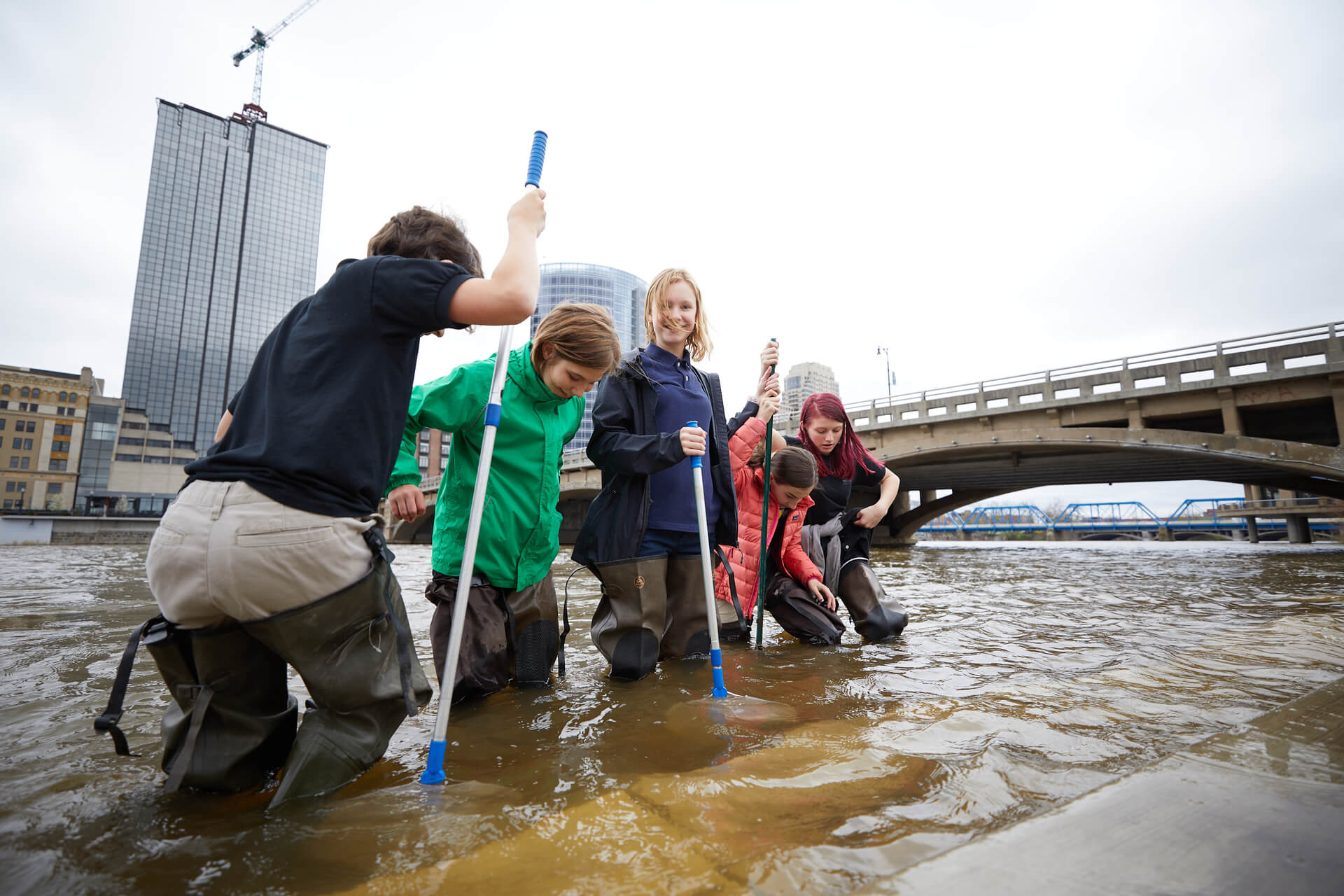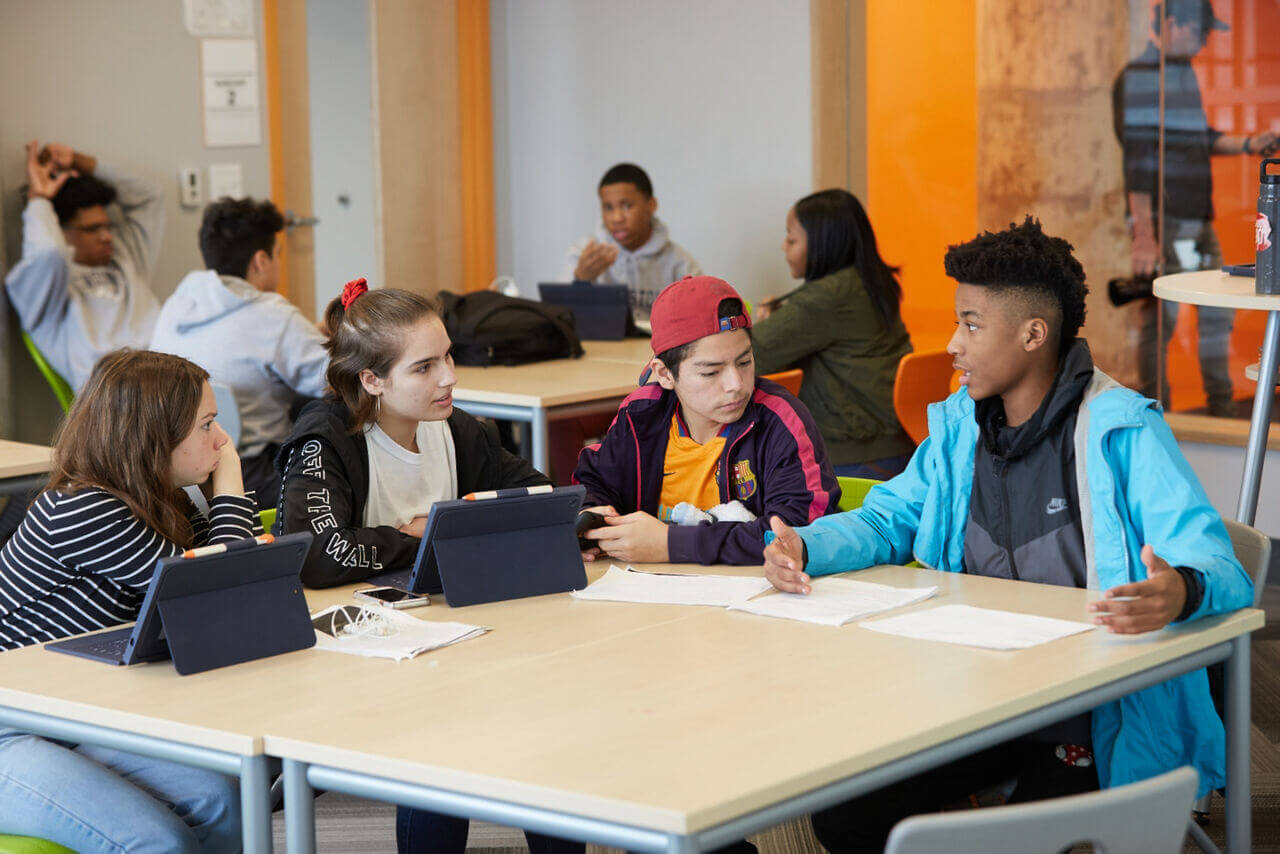What is Scaffolding in Education?
Stroll down the street of any major city, and you’re bound to walk by—or under—a giant…
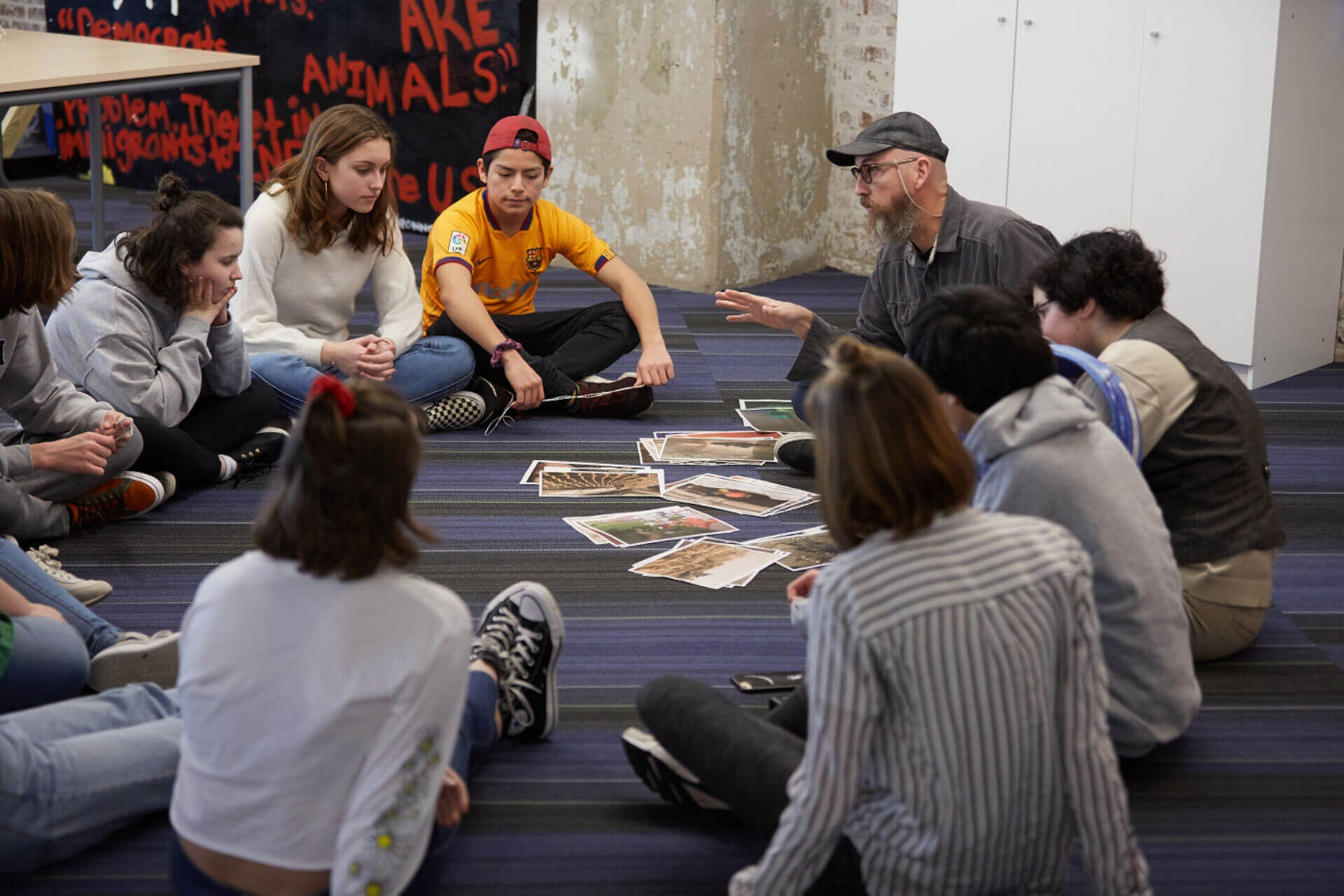
Stroll down the street of any major city, and you’re bound to walk by—or under—a giant Erector Set of metal legs and platforms. This scaffolding is a temporary structure designed to support a building and the people working on it. Just as it does on construction sites, scaffolding serves a similar purpose in education, providing temporary support for students as they learn.
Scaffolding is an instructional strategy where educators break up complex learning by using targeted supports based on the various needs of their students. This helps students understand and retain knowledge as they learn a new concept or skill. Through this model, a teacher might demonstrate how to solve a problem, then step back for students to work together in small groups before finally removing the scaffold and having students work independently.
When I was teaching, one of the highlights of the year was having students memorize and recite the Gettysburg Address. (They even dressed up as Abraham Lincoln!) Even though the speech is less than 275 words, it’s a daunting challenge. So to make it easier, I started off by assigning just a sentence or two of the speech at a time. In small groups, students looked up words they didn’t know, then rewrote the speech in their own words. Once they understood what the speech meant, memorizing it all suddenly became a lot more manageable.
Here’s how you can learn more about some of the many benefits of scaffolding in education and how to implement the practice in your in-person or virtual classroom. It’s just one tool teachers can use as they rethink high school so all students graduate prepared for college and careers.
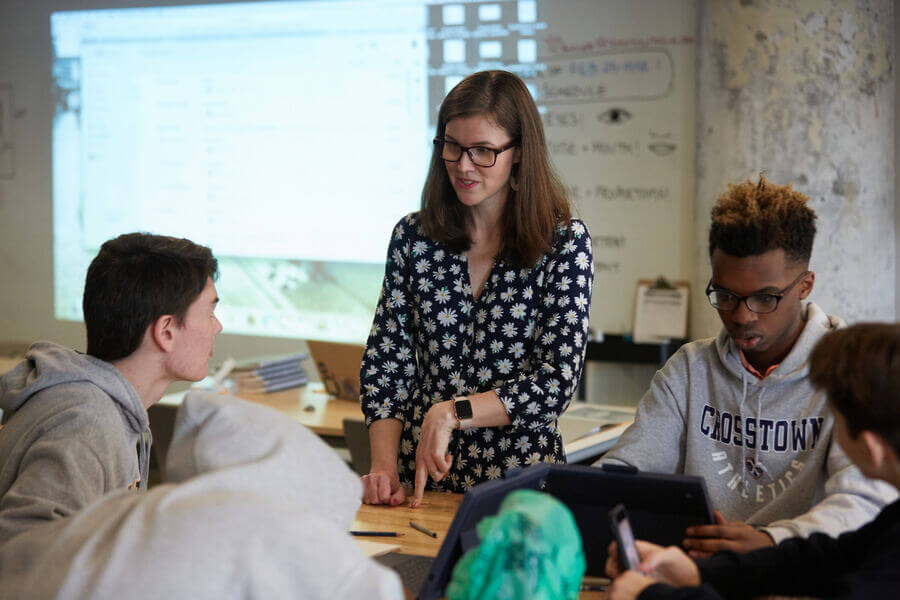
A Brief History of Scaffolding in Education
Psychologist Jerome Bruner first proposed the theory of educational scaffolding in the 1970s. Bruner and other psychologists used the term to describe how preschool teachers helped students learn through extensive explanations before withdrawing so students could work independently. The word itself refers to construction, because scaffolding in education is similar to a temporary platform.
The philosophy of scaffolding is very similar to the Zone of Proximal Development Theory, which states that because new skills are often difficult for children to learn on their own, they are often more easily developed with the help and encouragement of a teacher.
Another way to think of scaffolding is through the Gradual Release Model, where instruction shifts slowly from teacher modeling, to student and teacher practice and to independent application by the teacher. This is also known as the “I Do —We Do—You Do.”
- I Do: The teacher explains what students need to understand and models the process.
- We Do: Students begin working along with teacher support like prompts or partially completed examples.
- You Do: Students work independently to show their understanding.
Scaffolding vs Differentiation
Scaffolding and differentiation are two related educational strategies designed to support student learning. The difference is that scaffolding is what you do at the beginning of a lesson by breaking up learning into more manageable chunks for the entire class; differentiation is modifying instruction to the needs of individual students.
For example, when scaffolding a reading lesson, Rebecca Alber, a consulting editor at Edutopia writes, a teacher might preview the text with the entire class, introduce key vocabulary, or chunk the text into smaller bits for students to read and discuss as they go. If some students continue to struggle, a teacher might differentiate the same reading lesson with a more accessible text or assign a different project altogether.
Benefits and Challenges of Scaffolding in Education
One of the biggest benefits of scaffolding is that it creates a supportive classroom environment where students are free to ask questions, make mistakes and build confidence. Scaffolding also encourages students to take a more active role in their learning as the teacher slowly phases out the initial support. As teachers pull back, students learn to reinforce skills such as self-directed learning and self-management. These competencies also help students achieve XQ’s research-based Learner Outcomes, which aim to develop students who are deeply engaged in their own learning and fully prepared for all that the future has to offer.
Additionally, scaffolding can also benefit students because it:
- Improves comprehension
- Enhances problem-solving skills
- Fosters higher engagement
- Creates a more positive classroom environment
Of course, there are some challenges. Creating extra tools and supports for students in addition to the regular curriculum can be time-consuming and demanding. It also requires teachers to understand their students’ learning styles and behavior at a deeper level to identify appropriate scaffolds that match students’ needs.
And ironically, one of the biggest challenges of scaffolding can be knowing when to stop using the supports. As teachers, we want to ensure students don’t become too reliant on scaffolds— unable to move on to working independently.
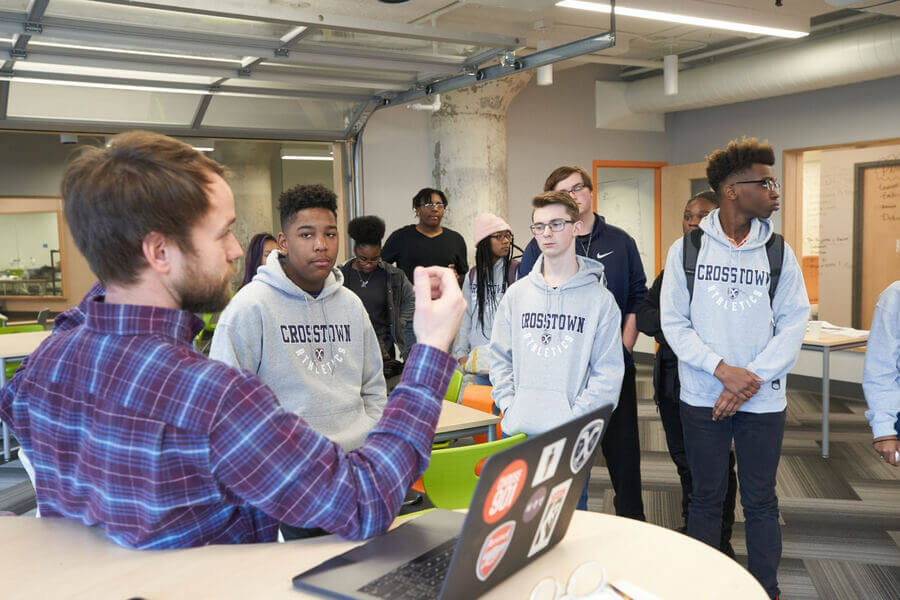
Using Scaffolding in the Classroom
Scaffolds come in all different shapes and sizes, and there are a wide variety of scaffolds teachers can implement, including:
- Breaking directions into smaller chunks
- Talking students through the process while they work on an assignment
- Grouping students together to talk through the task and support each other
- Giving students tips and tricks while they are working
An easy way to implement scaffolding is by simply tapping into your students’ prior knowledge. Students understand and retain new information better when they connect it to something they already know. For example, a high school history teacher can use prior knowledge as instructional scaffolding by having students connect current events to historical topics.
Teachers can also launch a new lesson by first asking students to share their experiences, ideas and theories about the topic they will be learning about. From there, teachers should ask students to identify how it might connect to their own lives. Sometimes, the teacher might have to offer hints to lead them to those connections, but once there, students will have an easier time grasping the material on their own. This is an example of blending between the “I Do—You Do” parts of the gradual release model.
Showing students exactly what they are expected to do is another cornerstone of scaffolding. Always show students what is expected of them by modeling an activity or assignment, and use that model with a criteria chart or rubric. For example, if a teacher assigns a persuasive essay for an assignment, they might include a finished example and the grading rubric so students understand what is expected of them.
Finally, have students model learning for the rest of the class. Activities can include a Student Fishbowl, in which a small group of students model work on an activity while the rest of the class watches and shares their observations. Afterward, ask students one thing they learned from the experience and have them share their experience with their peers.
Examples of Scaffolding in Education
Once you’ve dipped your toes into the world of scaffolding, you’ll find a range of additional strategies to try. Below are more examples:
- Pre-Teach Vocabulary: Often, one of the biggest hurdles for students in understanding a text across subject matter is difficult vocabulary. By preparing students for the challenging words or phrases they might encounter, teachers can front-load vocabulary and set students up for success. The Frayer Model of Vocabulary is one example of how teachers can make vocabulary an exercise that goes beyond just having students pull out a dictionary or search for a definition online. Give them time in small groups and whole-class discussions to come up with definitions on their own.
- Introduce Guided Notes: Also known as skeleton notes, this is a great way to encourage students to use better note-taking strategies. The teacher provides an outline for the material that will be covered, leaving out key information that students will then complete themselves. For math or science lessons, a variation on this idea is for teachers to create pre-drawn diagrams while leaving out important information students have to retrieve or identify.
- Utilize Graphic Organizers: Graphic organizers are visual thinking tools that help students organize and analyze information through a graphic framework. From simple shapes and lines to Venn diagrams, graphic organizers help students recognize patterns and plan out abstract ideas. Decades of research shows that graphic organizers can greatly improve student learning and higher-order thinking skills. The Harvard Graduate School of Education’s Visible Thinking project has some great ideas to bring graphic organizers into your classroom.
- Practice Think-Alouds: One of the best ways to scaffold a lesson is to explicitly show students an example of what they will be learning. As you demonstrate a science experiment or how to solve a math problem, the teacher should share their thought process aloud to provide students with a model for their thinking, a textbook example of the “I Do” strategy.
- Break Down Assessments: Scaffolding isn’t just reserved for lessons and activities. Dividing assessments into smaller, more manageable pieces allows students to complete the same amount of work over an extended period of time. Instead of assigning a final essay to cap a unit, you can scaffold it by having students turn in a literature review, an outline, a first draft, and so on. The other benefit of this strategy is that students have the chance to receive feedback and revise their work.
Scaffolding in Online and Remote Learning
Teachers can take advantage of the wealth of digital tools available to introduce students to a new topic through fun and creative ways, even when learning is online. Teachers can create playlists of videos for students to watch before a lesson or provide links to articles and games for students to explore first. Many online curriculum programs are also adaptive, making them natural scaffolds since they assess what a student knows and create a personalized path toward a learning goal.
Teachers can also modify many successful in-person scaffold strategies for online learning. Teachers who love having students visit stations can try virtual station rotations. Think about using digital tools to practice scaffolding in online learning, including:
- Flipgrid for teachers and students to model an activity
- Loom or Padlet for students to tap into prior knowledge
- Perusall to create opportunities for student collaboration
- Quizlet to pre-teach vocabulary
- Kami to create graphic organizers
- Pear Deck to model effective questioning strategies
Give it a Try
Scaffolds can be as simple or as in-depth as a teacher wants to make them, from modeling assignments and projects for students to using more advanced technology to pre-teach vocabulary or create graphic organizers. While scaffolding can be time intensive initially, it’s a worthwhile investment for both novice and veteran teachers.
Give scaffolding a try in your classroom, and let us know how it goes! Follow XQ on Twitter at @XQAmerica and share your stories as we #ReThinkHighSchool together. You can also sign up for our XQ Xtra Newsletter to get more resources, stories, and updates.
Photo at top by Chris Chandler
